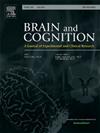揭示脑损伤与艺术技能提升之间的联系
IF 1.4
3区 心理学
Q3 NEUROSCIENCES
引用次数: 0
摘要
创伤性脑损伤(TBI)是一种异质性的神经系统疾病,无论是由单一事件还是反复创伤引起的,它以其认知、运动和行为影响而闻名。然而,它影响甚至增强艺术创造力的潜力仍然是一个较少研究的现象。本综述通过病例报告和神经影像学研究,探讨了脑外伤可以产生新的或增强的艺术能力的证据。我们研究了通常参与创造性过程的大脑区域——包括前额叶、顶叶、颞叶和枕叶皮层,以及皮层下和边缘区域——以及tbi相关损伤(如弥漫性轴索损伤和局灶性挫伤)如何改变其功能。提出的机制包括皮质去抑制和代偿神经可塑性,潜在地揭示潜在的创造能力。包括功能磁共振成像(fMRI)和弥散张量成像(DTI)在内的神经影像学发现,强调了默认模式和执行控制系统等网络连接的改变。与额颞叶痴呆(FTD)等也能引发突发创造力的疾病进行比较,有助于区分创伤性重组和神经退行性变化。最后,我们考虑了对神经康复的影响,特别是艺术的治疗用途,并反思了创伤性脑损伤后艺术转型的伦理维度。艺术表现被认为是损伤后适应性大脑可塑性和身份重建的标志。本文章由计算机程序翻译,如有差异,请以英文原文为准。
Unraveling the link between brain injury and enhanced artistic skills
Traumatic brain injury (TBI), whether from a single incident or repeated trauma, is a heterogeneous neurological condition known for its cognitive, motor, and behavioral effects. However, its potential to influence or even enhance artistic creativity remains a lesser-studied phenomenon. This review explores evidence suggesting that TBI can give rise to novel or intensified artistic abilities, drawing on case reports and neuroimaging studies.
We examine brain regions commonly involved in creative processes − including the prefrontal, parietal, temporal, and occipital cortices, as well as subcortical and limbic areas − and how TBI-related damage, such as diffuse axonal injury and focal contusions, may alter their function. Proposed mechanisms include cortical disinhibition and compensatory neuroplasticity, potentially unmasking latent creative capacities.
Neuroimaging findings, including fMRI and diffusion tensor imaging (DTI), highlight altered connectivity in networks such as the default mode and executive control systems. Comparisons with conditions like frontotemporal dementia (FTD), which can also trigger emergent creativity, help distinguish trauma-induced reorganization from neurodegenerative changes.
Finally, we consider implications for neurorehabilitation, particularly the therapeutic use of art, and reflect on the ethical dimensions of post-TBI artistic transformation. Artistic expression is proposed as a marker of adaptive brain plasticity and identity reconstruction following injury.
求助全文
通过发布文献求助,成功后即可免费获取论文全文。
去求助
来源期刊

Brain and Cognition
医学-神经科学
CiteScore
4.60
自引率
0.00%
发文量
46
审稿时长
6 months
期刊介绍:
Brain and Cognition is a forum for the integration of the neurosciences and cognitive sciences. B&C publishes peer-reviewed research articles, theoretical papers, case histories that address important theoretical issues, and historical articles into the interaction between cognitive function and brain processes. The focus is on rigorous studies of an empirical or theoretical nature and which make an original contribution to our knowledge about the involvement of the nervous system in cognition. Coverage includes, but is not limited to memory, learning, emotion, perception, movement, music or praxis in relationship to brain structure or function. Published articles will typically address issues relating some aspect of cognitive function to its neurological substrates with clear theoretical import, formulating new hypotheses or refuting previously established hypotheses. Clinical papers are welcome if they raise issues of theoretical importance or concern and shed light on the interaction between brain function and cognitive function. We welcome review articles that clearly contribute a new perspective or integration, beyond summarizing the literature in the field; authors of review articles should make explicit where the contribution lies. We also welcome proposals for special issues on aspects of the relation between cognition and the structure and function of the nervous system. Such proposals can be made directly to the Editor-in-Chief from individuals interested in being guest editors for such collections.
 求助内容:
求助内容: 应助结果提醒方式:
应助结果提醒方式:


